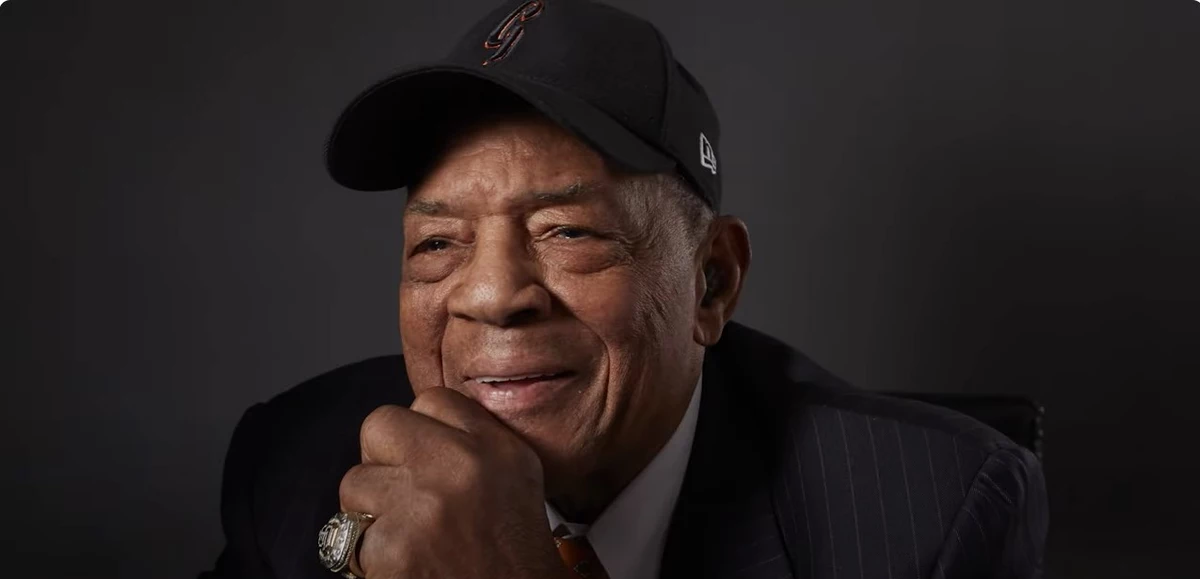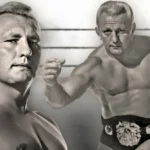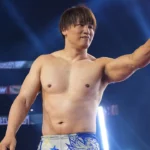The “Say Hey Kid’s” Final Resting Place: A Mystery Respectfully Guarded
The baseball world mourned the passing of the legendary Willie Mays, the “Say Hey Kid,” on June 18, 2024, at 93. While his accomplishments on the field are forever etched in baseball lore, the location of his final resting place remains a closely guarded secret, a testament to the family’s desire for privacy during their time of grief.
While fans may yearn to pay their respects at his graveside, the consensus suggests that Mays was likely laid to rest in Ripley, Tennessee, his birthplace and a town that held a special place in his heart.
Maplewood Cemetery: A Probable Final Chapter
If Ripley is indeed where Mays’ story concludes, Maplewood Cemetery is the most probable location. Nestled in the heart of Ripley, Maplewood represents more than just a cemetery; it serves as the final resting place for generations of Ripley families, and it’s believed that Mays may have joined them there.
Honoring a Legacy While Respecting Privacy
The Mays family has respectfully requested privacy as they grieve, a request that fans are urged to honor. However, it’s anticipated that fans from across the nation and beyond will find their way to Ripley, paying tribute to the legend at Maplewood Cemetery, a site likely to become a place of pilgrimage for those touched by Mays’ extraordinary life and career.
Where did Willie Mays Live Before His Passing?
While the exact location of Mays’ residence in the years preceding his passing is not widely publicized, his enduring connection to San Francisco is undeniable. After the Giants relocated from New York in 1958, Mays became an iconic figure in the city, captivating fans with his electrifying style of play.
“24 Willie Mays Plaza” at Oracle Park stands as a testament to the indelible mark he left on the Giants and their loyal fans. This plaza, more than just a landmark, serves as a gathering place for fans to reminisce about Mays’ contributions to the team and the city.
A Gathering of Giants: Inside Willie Mays’ Memorial Service
Following his passing, a public memorial service was held at Oracle Park in San Francisco on Monday, July 8, 2024. The event drew a diverse crowd, a testament to Mays’ impact that extended far beyond the baseball diamond.
From Presidents to Hall of Famers: A Nation Mourns
The memorial service was a testament to Mays’ widespread appeal and the profound impact he had on those fortunate enough to witness his greatness. Former President Bill Clinton made a surprise appearance, sharing heartfelt anecdotes that revealed Mays’ humility and the genuine care he had for others. Former President Barack Obama, unable to attend, sent a heartfelt video message expressing his condolences.
The baseball world, naturally, was out in full force. Commissioner Rob Manfred paid his respects, along with a contingent of Hall of Famers, including Joe Torre, Reggie Jackson, Dennis Eckersley, Rickey Henderson, and Juan Marichal. Giants alumni, including Barry Bonds (Mays’ godson), Felipe Alou, Dusty Baker, and Joe Amalfitano, were also in attendance, creating a poignant reunion of those whose lives were touched by Mays.
Touching Tributes and Enduring Memories
The memorial service was replete with moving tributes, each painting a vivid picture of the man behind the legend. Mays, who served in the U.S. Army during the Korean War, received full military honors, including the playing of “Taps” and the presentation of an American flag to his son, Michael.
Barry Bonds delivered a poignant speech honoring his godfather’s legacy, while Bill Clinton shared personal stories, emphasizing Mays’ humility and the genuine warmth he exuded. Commissioner Manfred aptly summarized Mays’ enduring impact, stating, “There’s never been a better representative of baseball’s magic than Willie Mays. He dominated the game in every way. He didn’t merely play, he captured imaginations.”
The memorial service served as a fitting farewell to a true icon, leaving attendees with a profound sense of loss while simultaneously celebrating a life well-lived and a legacy that will continue to inspire for generations to come.
The Willie Mays Catch: A Moment Frozen in Time
No discussion about Willie Mays would be complete without revisiting “The Catch,” arguably the most iconic defensive play in baseball history.
It was Game 1 of the 1954 World Series, and the New York Giants were locked in a tense battle with the Cleveland Indians. In the eighth inning, with the score tied 2-2, Cleveland’s Vic Wertz launched a towering drive to deep center field off Giants’ pitcher Don Liddle. The Polo Grounds, known for its cavernous outfield, seemed almost certain to surrender a game-changing home run.
Defying Gravity: Mays’ Moment of Brilliance
Willie Mays, renowned for his speed, instincts, and defensive prowess, had other plans. He turned, sprinting towards the wall with his back to the infield, eyes locked on the ball as it soared through the air. Fans watched with bated breath, unsure if even the “Say Hey Kid” could track down this seemingly impossible catch.
And then, in a moment that would be replayed countless times, Mays made “The Catch.” He reached out, glove outstretched, snagging the ball over his shoulder just feet from the wall. The crowd erupted, a collective gasp followed by a roar that shook the Polo Grounds to its core. Wertz, the batter who had struck the ball with such authority, could only tip his cap in awe.
Mays, without hesitation, wheeled around and fired the ball back to the infield, preventing any runners from advancing. The Giants, energized by their center fielder’s heroics, held on to win the game and ultimately swept the World Series.
Beyond “The Catch”: A Legacy Cemented
“The Catch” became an instant classic, a symbol of Mays’ otherworldly talent and a testament to his unwavering determination. The catch wasn’t simply about athleticism; it represented the essence of baseball, a sport where breathtaking moments of brilliance often emerge when least expected.
The “Basket Catch”: A Technique Forged in Service
While “The Catch” remains his most celebrated defensive gem, Mays’ impact on outfield defense transcended that single play. He was among the first to utilize the “basket catch,” a technique where he lowered his glove towards his waist as the ball descended, allowing for a smoother catch and quicker transfer for throws. Mays honed this technique during his service in the Army.
Willie Mays was more than just a great fielder; he was a five-tool player who excelled in every facet of the game. But it was his defense, his range, his arm, and those iconic catches that cemented his place among baseball’s immortals. “The Catch” became a symbol of athletic excellence, a timeless reminder that within the realm of sports, the impossible sometimes becomes reality.
Remembering Carl Mays: A Tragic Tale from Baseball’s Past
While the world remembers Willie Mays, it’s important to distinguish him from Carl Mays, a pitcher whose career was marred by a tragic incident. Carl Mays, who pitched for several teams, including the Boston Red Sox and New York Yankees, is infamously remembered for a fatal beaning that shook the baseball world.
In 1920, during a game against the Cleveland Indians, one of Mays’ fastballs struck batter Ray Chapman in the head. Chapman tragically succumbed to his injuries the following day. This incident, one of the darkest chapters in baseball history, led to significant rule changes aimed at improving player safety.
Following his retirement from baseball, Carl Mays returned to his hometown of Wellston, Ohio, seeking a life away from the spotlight. He passed away in 1971 at the age of 80 and was laid to rest in Wellston Cemetery. While his legacy is forever linked to the tragic death of Ray Chapman, it’s essential to remember Carl Mays as a separate individual from the iconic Willie Mays. Learn more about the role of women workers in kibbutz communities in Israel.















